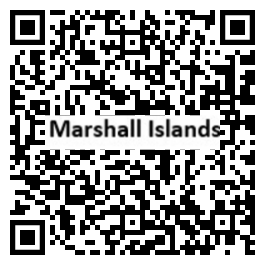Introduction
Background
After almost four decades under US administration as the easternmost part of the UN Trust Territory of the Pacific Islands, the Marshall Islands attained independence in 1986 under a Compact of Free Association. Kwajalein hosts one of four dedicated ground antennas that assist in the operation of the Global Positioning System (GPS) navigation system.
Geography
Area
total: 181 sq km
land: 181 sq km
water: 0 sq km
Climate
tropical; hot and humid; wet season May to November; islands border typhoon belt
Natural resources
coconut products, marine products, deep seabed minerals
People and Society
Population
80,966 (2023 est.)
Ethnic groups
Marshallese 95.6%, Filipino 1.1%, other 3.3% (2021 est.)
Languages
Marshallese (official) 98.2%, other languages 1.8% (1999 est.)
Religions
Protestant 79.3% (United Church of Christ 47.9%, Assembly of God 14.1%, Full Gospel 5%, Bukot Nan Jesus 3%, Salvation Army 2.3%, Reformed Congressional Church 2.2%, Seventh Day Adventist 1.7%, New Beginning Church 1.4%, other Protestant 1.6%), Roman Catholic 9.3%, Church of Jesus Christ 5.7%, Jehovah's Witness 1.3%, other 3.3%, none 1.1% (2021 est.)
Population growth rate
1.3% (2023 est.)
Government
Government type
mixed presidential-parliamentary system in free association with the US
Capital
name: Majuro; note - the capital is an atoll of 64 islands; governmental buildings are housed on three fused islands on the eastern side of the atoll: Djarrit, Uliga, and Delap
Executive branch
chief of state: President David KABUA (since 13 January 2020); note - the president is both chief of state and head of government
head of government: President David KABUA (since 13 January 2020)
Legislative branch
description: unicameral National Parliament consists of:
Nitijela (33 seats; members in 19 single- and 5 multi-seat constituencies directly elected by simple majority vote to serve 4-year terms); note - the Council of Iroij, a 12-member group of tribal leaders advises the Presidential Cabinet and reviews legislation affecting customary law or any traditional practice); members appointed to serve 1-year terms
Economy
Economic overview
upper middle-income Pacific island economy; US aid reliance; large public sector; coconut oil production as diesel fuel substitute; growing offshore banking locale; fishing rights seller; import-dependent
Real GDP (purchasing power parity)
$250.694 million (2021 est.)
$247.93 million (2020 est.)
$252.582 million (2019 est.)
Real GDP per capita
$6,000 (2021 est.)
$5,700 (2020 est.)
$5,600 (2019 est.)
Agricultural products
coconuts
Industries
copra, tuna processing, tourism, craft items (from seashells, wood, and pearls)
Remittances
12.82% of GDP (2020 est.)
13.55% of GDP (2019 est.)
14.34% of GDP (2018 est.)
Exports
$1.37 billion (2021 est.)
$773 million (2020 est.)
$1.17 billion (2019 est.)
Exports - partners
Denmark 33%, South Korea 20%, Germany 15%, Poland 9%, Cyprus 4% (2021)
Exports - commodities
ships, recreational boats, skipjack, tuna, refined petroleum, broadcasting equipment (2021)
Imports
$10.7 billion (2021 est.)
$12 billion (2020 est.)
$9.1 billion (2019 est.)
Imports - partners
South Korea 33%, China 30%, Japan 11%, Greece 3%, Cyprus 3% (2021)
Imports - commodities
ships, refined petroleum, centrifuges, recreational boats, boat propellers (2019)
Page last updated: Thursday, December 14, 2023
